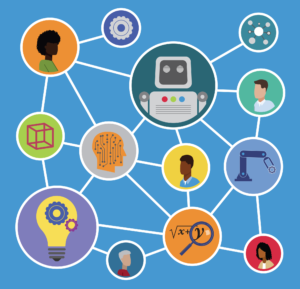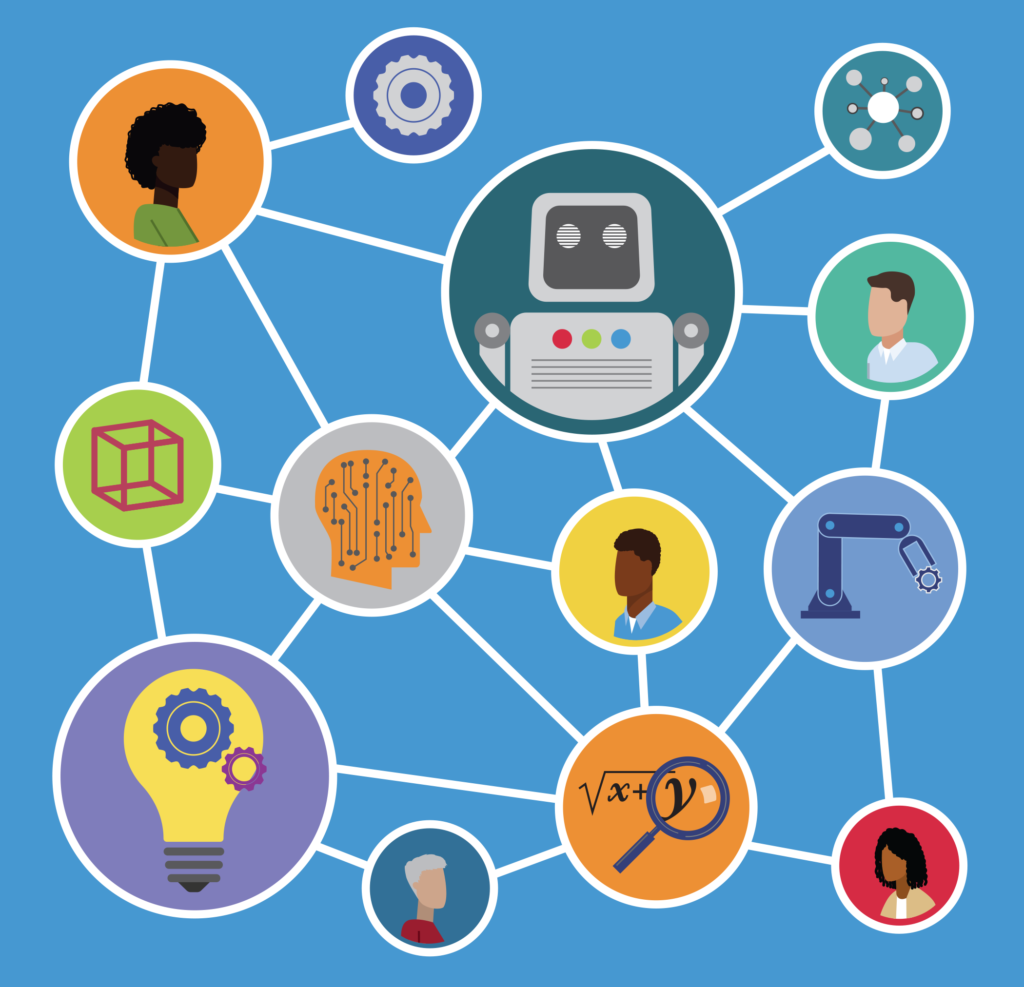 by Sarah Hampton
by Sarah Hampton
In the previous post of this series, I shared some initial reflections on the AI and Learning Environments Webinar. I focused on one of the webinar’s important themes–what to consider when making purchasing or adoption decisions of AI tools. In this post, I want to highlight another important theme–classroom orchestration, and how AI can enhance it.
What is Classroom Orchestration?
As practitioners, we understand how complex good teaching is. At any given moment, we’re facilitating routines, reading our students’ body language, adjusting instruction, distributing materials, setting up hardware, opening software, taking attendance, making judgement calls, managing distractions, monitoring progress, preserving classroom culture, and so much more! In other words, we coordinate multiple processes and activities simultaneously to promote a productive learning environment. That’s classroom orchestration in a nutshell.
Cindy Hmelo Silver on Classroom Orchestration
One of my fellow panelists in the webinar, researcher Cindy Hmelo Silver, gets the complexity of good teaching, too. She shared her perspective as someone focusing on “ambitious learning practices” such as problem-based learning and inquiry learning. Cindy described classroom orchestration as “how teachers can productively coordinate interventions across multiple learning activities with multiple resources and different kinds of collaborative interactions.” (See the webinar recording and learn more.)
Cindy is the director for the Center of Research on Learning and Technology at Indiana University. Her work often includes how technology supports ambitious learning practices. One problem she sees is that it becomes increasingly more difficult to facilitate activities that support ambitious learning practices as class sizes increase. She suggests that one potential solution for this is to allow AI technologies to help bear the burden of classroom orchestration.
Directly Helping Students through AI-Assisted Classroom Orchestration
One way AI can help with classroom orchestration is by helping students directly while they’re engaged in activities. This could be through an intelligent tutoring system (ITS) that uses a virtual tutor agent to interact with students. These kinds of social agents are able to deliver individualized feedback and instruction to each student in a classroom simultaneously which frees up the teacher to facilitate groups, work one-on-one with students if they need a human teacher, etc. Intelligent tutoring systems are probably the most popular kinds of AI tools in schools today. Some but not all ITSs include virtual tutor agents–some still look like problems with hints or have text based ways for students to ask questions.
Helping Teachers Help Students through AI-Assisted Classroom Orchestration
Another way AI can help with classroom orchestration is by helping teachers coordinate the learning environment. Cindy discussed how much goes on in a classroom when students are engaged in authentic problem-based learning. Each group’s approach to solving the problem will be unique and therefore their progress and activities will be as well. Some students might be engaged in computer-based modeling or simulations. Others might be reading or watching a video to learn about the phenomena they’re studying. Others could be running experiments to test their hypotheses. The challenge of coordinating and facilitating these activities while ensuring all students are reaching their learning goals can prevent teachers from using PBL–even though students who learn from PBL approaches are better able to apply their knowledge to novel problems as well as utilize more effective self-directed learning strategies than students who learn from traditional curricula. (See one of Cindy’s papers on PBL for more). AI-based classroom assistants could offer supports such as monitoring how dialogue or participation is distributed between group members, monitoring group progress on the overall project goal, identifying students or groups who are struggling on learning checkpoints, etc. and then generating a detailed report for teachers so they can make the best use of their time and human interventions. In contrast to virtual tutors, most of these kinds of assistants are still being developed.
I like the way classroom orchestration and AI assistants are envisioned in the AI and the Future of Learning Expert Panel Report beginning on page 10. Check it out to learn more about what researchers imagine AI assistants could do to support teachers in 5-10 years. What do you hope AI Assistants will be able to do? What types of supports would you need to facilitate more ambitious learning practices in your classroom? Let us know, tweet @EducatorCIRCLS and/or use #AIandEdu and help us imagine the future of education.

